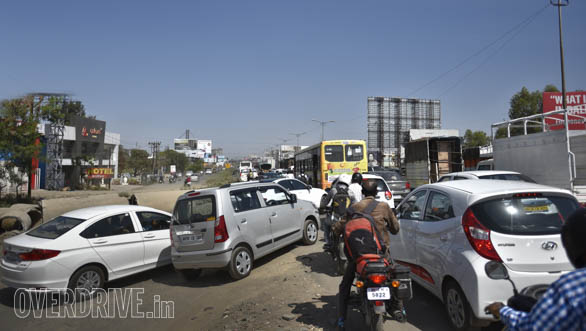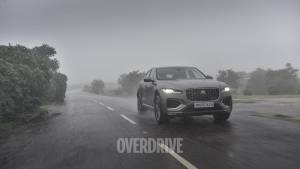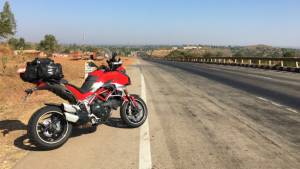Better Riding: Reading the patterns
Traffic rarely flows smoothly but the level of turbulence in it can be low or high. In my experience, it becomes the most turbulent at intersections, at places where vehicles can leave or merge into the main flow and if there's an obstruction in one of the lanes ahead requiring everyone in that lane to make a change. Studies show that some of the formulae that can be used to explain the flow of water in a channel apply with great accuracy to traffic as well. Today, I wanted to discuss how you read what's happening ahead as a set of patterns.

For example, you're approaching a bus stop and there's, say, light traffic in all lanes of a three-lane road. My first assumption would be that the bus driver will probably be a badly behaved boor, which means instead of entering the bus lane, he will block off the left-most lane. Worse, his will be a short stop and when he is done, he won't move ahead, he will put out a hand and pull into the middle lane at the very least without regard to traffic.
When approaching this situation, I'm looking at the pattern of the flow rather than individual elements. As if each vehicle was a molecule in a stream of water. The bus will cause a sizeable ripple as he stops traffic in two of three lanes while some of the more impatient people in the middle lane try to get around the bus if they can by entering the right lane.
My response to the flow is to decide if I want to be in the right lane early and prepare to defend my lane position - usually by following the left tail lamp of the car ahead. Or I might choose to slow and go to the left lane and expect to capitalise on the space left vacant by the bus. A scooter or motorcycle joining from the left of a flyover or departing the top lane to exit the flow will cause a much smaller ripple and your reaction might mean just a slight change of position within your lane.
Other patterns emerge when there is a blockage, like at an intersection. Vehicles tend to slow in a straight line until they're going slowly and then suddenly they change direction looking for the emptiest queue to join. This also happens at tollbooths. Again, you're reading the patterns to see where you can take the most advantage - which can sometimes be about safety if the chaos is extreme rather than speed.
Learning to read patterns is a conscious effort. Slow down a bit, calm down a bit and allow the extra brain space to watch what happens in a series of situations where a vehicle interrupts the flow. You will realise that the patterns are fairly repetitive and you can usually make good assumptions about what happens next. This changes your ability to anticipate and that's a crucial skill for a good rider.
A word of warning, though. Don't get suckered into thinking you're Nostradamus. Murphy reminds us that nothing is foolproof because fools come up with new ways to defeat systems. Inasmuch, use the assumptions but as always be prepared to take evasive action. And learn to recognise the time and place when it becomes expedient to stop looking for a fast way forward and choose to behave like a car - slow and predictable - so you can safety get out the other side and carry on.
For more Better Riding stories, click here
Related Stories
Top Stories
Latest Videos
Most Popular
- Budget Sportbike Showdown: Kawasaki Ninja 500 vs Aprilia RS 457 vs Yamaha YZF-R3
- Mumbai-Pune Expressway speed restrictions updated
- 2014 Triumph Daytona 675 vs 2024 Kawasaki ZX6R - A Decade of Evolution in Supersport Motorcycles
- 2024 Hyundai Creta vs Toyota Urban Cruiser Hyryder vs Skoda Kushaq comparison review - the hype is real?
- Nissan Magnite EZ-Shift review - is the AMT any good?













